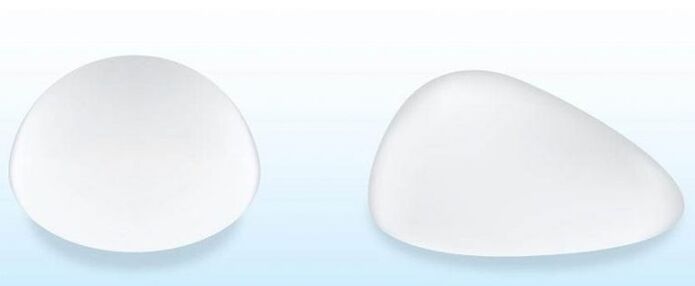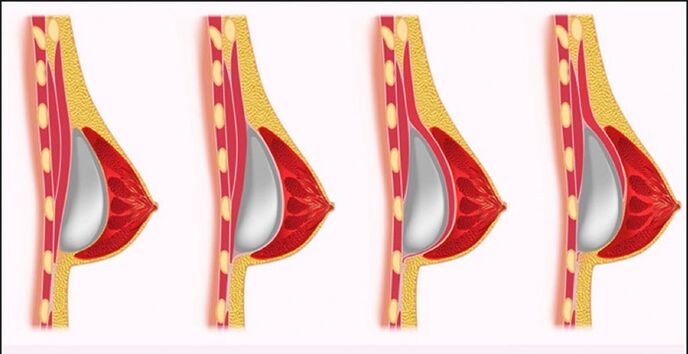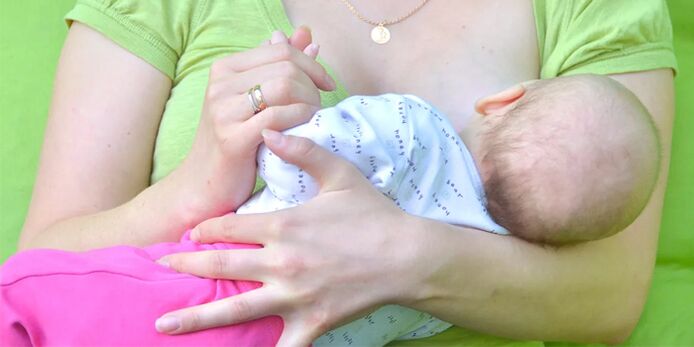Shape correction and breast augmentation are one of the most popular plastic surgery procedures. With the help of mammoplasty, you can correct congenital or acquired breast defects and restore their volume and elasticity after delivery and breastfeeding. Properly performed surgery can help women become more attractive and confident.
Indications for surgery
- Decreased mammary glands and decreased elasticity (breast sagging).
- Increase breast volume while maintaining its tone and position (large lesions).
- The mammary glands decrease after breastfeeding.
- Small breasts (small breasts).
- Enlarged male breasts (gynecomastia).
Types of mammoplasty
- Breast augmentation(Endoprosthesis)-Breast augmentation, using implants to correct its shape. It is used for breastfeeding after childbirth and is congenital asymmetry.
- Reduction mammoplasty-Reduce the bust circumference of sagging breasts or gigantic bone disease.
- Breast fixation-Breast augmentation. If the volume of the breast meets the surgical requirements, it is suitable for breast sagging.
Breast endoprosthesis
This surgery involves installing a silicone prosthesis (implant) into the breast. The choice of incision site is consistent with women. The implant is placed under the pectoral muscles, or between the muscles and mammary glands if the volume of the breast allows. The incision is sutured and no drainage is required. The nipple and areola enlarged after the operation.
Breast implants
Silicone or polyurethane prosthesis can correct the volume and shape of the chest, giving people a feeling of natural body tissue.
The life of the implant is more than 15 years, after which it is recommended to replace it.

Products differ in many indicators:
- Filler: viscous gel or saline (sodium chloride). The composition of the gel is more elastic, more uniform, and lighter, but if it leaks, it is harmful to the body. Salt solutions are safer, softer, and cheaper. Negative characteristics-gurgling sound when moving, easy to leak.
- Structure: rough (textured) or smooth. Textured implants are more stable, but skin folds may appear due to friction between body tissue and its surface. The disadvantage of a smooth denture is that it is easy to shift.
- Shape: anatomical or round. The former looks more natural, while the latter maintains the symmetry and shape of the breast even when it is displaced.
Reduction mammoplasty
During this type of surgery, adipose tissue and breast tissue will be partially removed, their size will change, and a new shape will be created.
Removal of excess tissue can reduce the likelihood of cancer.
Reduction mammoplasty options:
- Liposuction. This method is considered conservative and does not leave seams. Designed for slight breast reduction with mild sagging breasts.
- Short (vertical) seams. A popular method to keep the breasts in their natural shape and sensitive nipples. The operation time is short and the complication rate is low.
- T-shaped (anchor) cutting. Classic method, used to remove large amounts of tissue. Its disadvantages are long recovery time and large scars.
- Nipple transplantation amputation. It is used for very large breasts. This method is associated with a high risk of breast damage, loss of nipple sensitivity, and inability to breastfeed.
Breast fixation
There are several ways of breast augmentation without prosthesis:
- Vertically used for breast sagging of 1-2 degrees, the seams are almost invisible, and the cosmetic effect is long-lasting. This method is not effective for lowering breasts of 3-4 degrees.
- Anchor mastopexy has a good effect on any complicated ptosis. Its disadvantages include a longer recovery period, obvious sutures, and increased risk of breast tissue injury.
- Breast fixation around the areola is to remove a small piece of skin around the areola. It is suitable for false sagging, but it is ineffective for other forms of sagging breasts.
Operation phase
In order to obtain excellent plastic surgery results, three stages of high-quality medical care are very important. The preparation period lasts 1-2 weeks. The actual surgical intervention takes 1 to 4 hours.
Full recovery occurred within 1. 5 months.
Preparing for mammoplasty

The operation should be performed no earlier than one year after the end of lactation. It is forbidden to take hormonal contraceptives, aspirin and preparations containing salicylate 2 weeks before surgery.
You should stop drinking and smoking.
During the preparation process, research must be carried out:
- General and biochemical blood tests;
- Electrocardiogram
- Blood test for anticoagulant (coagulation chart);
- Breast ultrasound
- General urinalysis
- Test for hepatitis and HIV virus.
The process of surgical intervention

Breast surgery is performed under general anesthesia. A special type is dilator skin tension. It is used to increase the volume of the breast in the absence of its own tissue and large-sized implants. The process is carried out in two stages. First, install a dilator to gradually stretch the breast tissue for 1. 5-2 months.
When the desired size is reached, the endoprosthesis is placed in the breast.
Surgical incision method:
- Through the folds under the breast (under-breast passage). The safe method of breast augmentation. The 4-5 cm long incision scar will disappear under the slightly lowered breast over time. Small breasts of thin girls are difficult to enter.
- An incision around or along the lower arch of the areola (around the areola method). Advantages-surgical scars are almost invisible. For patients planning to breastfeed, this method is not recommended due to the high risk of breast injury.
- Endoscopic enhancement through the axillary approach. High-tech equipment helps to install implants without damaging blood vessels and nerve fibers. Make a 3-4 cm long incision in the armpit and cover the scar naturally. The volume of the implant is limited-up to 400 ml.
- Perform endoscopy through the belly button. Because the entry point is far from the surgical site and it is difficult to form a prosthetic "pocket", this method is rarely used.
Rehabilitation after breast augmentation

If there are no complications during the operation, the patient needs to stay in the hospital for up to 3 days. After being discharged from the hospital, he must participate in dressing changes. Moderate pain in the intervention area that occurred in the first few days was considered natural. Postoperative edema may cause skin tightness, and the edema will subside after about 5-7 days.
After 4-6 weeks, the breast will droop slightly, look more natural, and form a capsule around the implant.
Successful recovery rules:
- Don't carry heavy shoulder straps, don't lift heavy weights.
- Don't go to the health club, swimming pool, sauna, bathroom.
- Sleep on your back.
- Don't raise your hands.
- Be sure to wear tights after breast augmentation.
Possible complications
- Capsular contracture. The body forms a shell around the endoprosthesis, which can cause it to shift, destroy the symmetry of the breast and its hardening.
- Infect. Infections can occur during surgery due to violations of aseptic rules or non-compliance with sterilization and care standards. The special risk period is 1 week after surgery.
- Keloids, hyperplastic scars. If the body tends to form them, they will appear. These strata look like dense ridges bulging above the surface of the skin, destroying the appearance of the breast.
- The accumulation of blood and serum (hematoma, seroma) causes the skin to darken. It occurs when blood vessels and lymphatic vessels are damaged during surgery or recovery. Complications are due to low blood coagulation, sharp rise in blood pressure, and incorrect endoprosthesis size.
- Reduce or lose the sensitivity of the nipple and areola. It often occurs when large breasts are reduced by reduction mammoplasty due to nerve damage.
- The implant is broken. It occurs due to the thin shell, which is usually found in cheap prostheses. Salt fillings are easily absorbed by the body without causing harm. Damage to endoprostheses with viscous gel is not always obvious, but if silicone enters the body tissues, it can be dangerous.
Breastfeeding after surgery

The safest operation is through an incision in the armpit (through the armpit) or under the breast (under the breast).
You can breastfeed about a year after the operation.
Lactation problems may occur in the following situations:
- Place endoprostheses to compress the breasts and reduce the amount of milk they produce.
- Incision along the areola is more likely to damage the nerve endings around the nipple.
- Reducing plastic is related to breast size reduction, which can damage the milk duct and hinder its function.
Under what circumstances is it prohibited to undergo breast plastic surgery?
- Cardiovascular disease, varicose veins (thrombophlebitis, thrombosis).
- Severe breast disease.
- Oncology.
- Coagulation dysfunction, diabetes.
- Infectious diseases (ARVI, influenza).
- Nervous and mental disorders.
- Pregnancy, breastfeeding.
- Under 18 years of age.
Pros and cons of mammoplasty

The advantages of plastic breast correction:
- Application of modern interventions.
- Correct congenital and acquired breast defects.
- Long-lasting and significant aesthetic effect.
- Short-term operation.
- The shape and material of the endoprosthesis can be selected at will.
- Retain lactation ability.
Possible disadvantages include:
- Skin traces left by the incision-sutures, scars (unless special absorbable materials are used).
- The threat of complications (infection, breast deformity, bleeding).
- The endoprosthesis needs to be replaced every 10-15 years.
- The high cost of mammoplasty.
- General anesthesia is required.
- Pain on the first day after surgery.
- Compression underwear needs to be worn frequently.
- Long-term recovery (from a few months to a year), refusal to exercise, physical activity, pregnancy, breastfeeding.


























